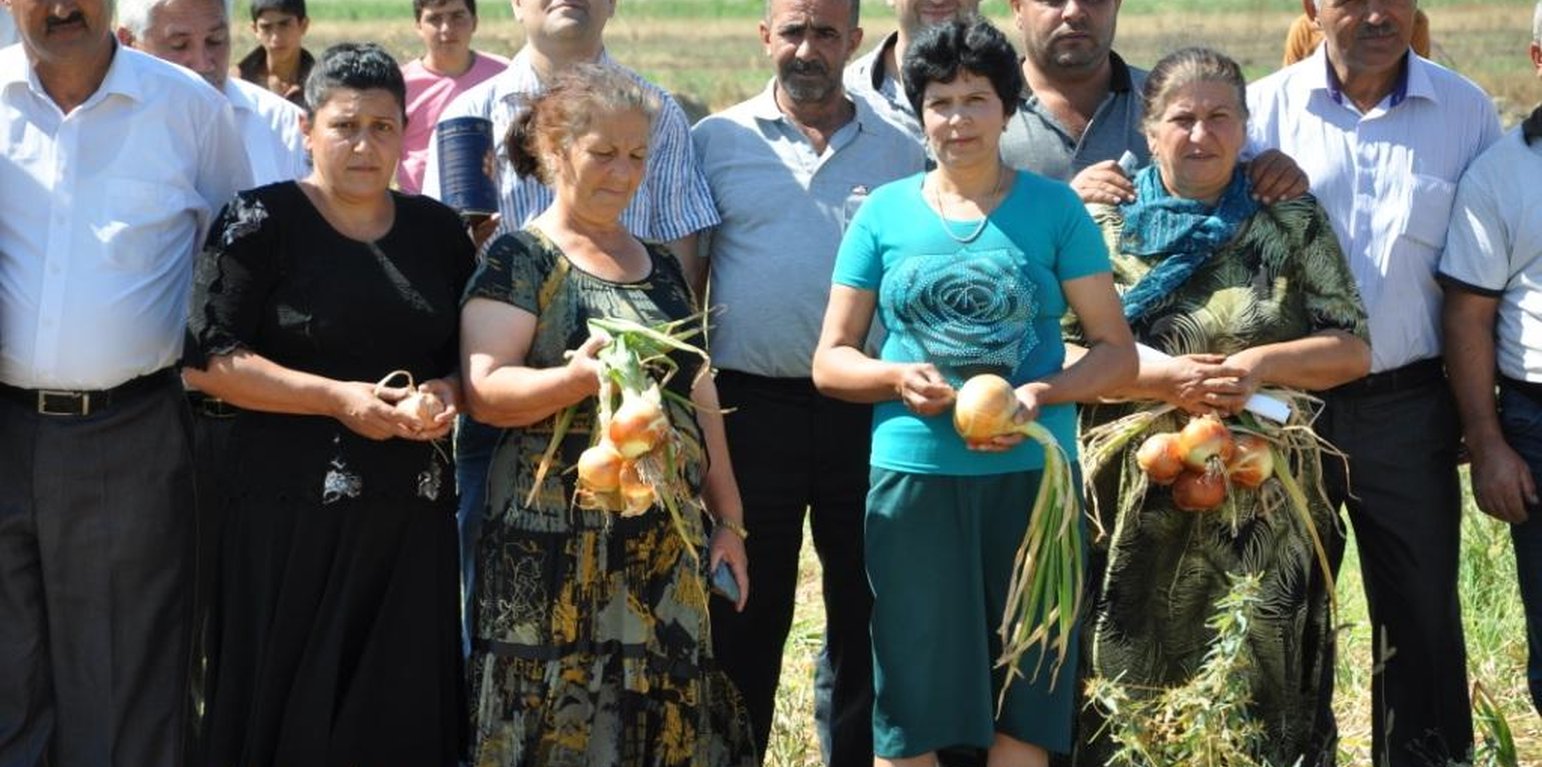Introduction of new seed varieties through demonstration plots with seed dealers
(Azerbaijan)
Description
To facilitate information on new seed varieties.
Aims / objectives: To build trust between the seed dealers and the farmers.
To introduce new seed varieties to rural farmers that are appropriate to the growing conditions of the region. These varieties have added benefits like taste, quality, disease resistance and longer storage capacity over local traditional varieties.
Methods: The programme uses a facilitation approach to bring stakeholders together and explain the mutual benefits of working together to improve the vegetable seed value chain in the region.
Stages of implementation: 1. Discuss with the seed dealers the idea of marketing their new imported seed varieties in the community using demonstration plots.
2. Help the seed dealer to identify capable and willing community based farmers to cultivate the demonstration plots.
3. Help facilitate the contractual arrangement between the stakeholders, in this case the seed dealer provides free seed and agricultural inputs, whilst the farmer cultivates the crop with advice from the seed dealer.
4. Just before the harvest an Open Field Day is held by the farmer and seed dealer for local rural farmers to visit the site and ask questions about the crop.
Role of stakeholders: Programme Staff: To facilitate the process and linkages between stakeholders.
Seed Dealers: to provide seed, inputs and information to the land user on cultivation methods.
Farmer: To cultivate the crop to the best of their ability and provide information to local farmers.
Other important information: In this context the seed dealer also is key player in the vegetable seed value chain for providing agricultural extension services to rural farmer, however, there are issues of trust between farmers and seed dealers due to the lack of control of quality of imported seed (90% of market), lack of information in the local language, and sold after the expired date.
Location
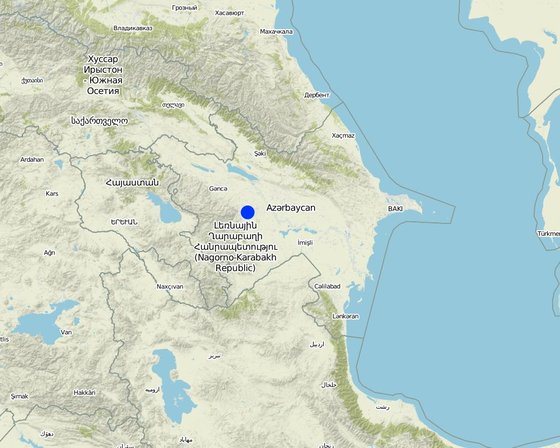
Location: Tarta / Barda / Agdam, Upper Karabach, Azerbaijan
Geo-reference of selected sites
Initiation date: 2012
Year of termination: 2013
Type of Approach
-
traditional/ indigenous
-
recent local initiative/ innovative
-
project/ programme based
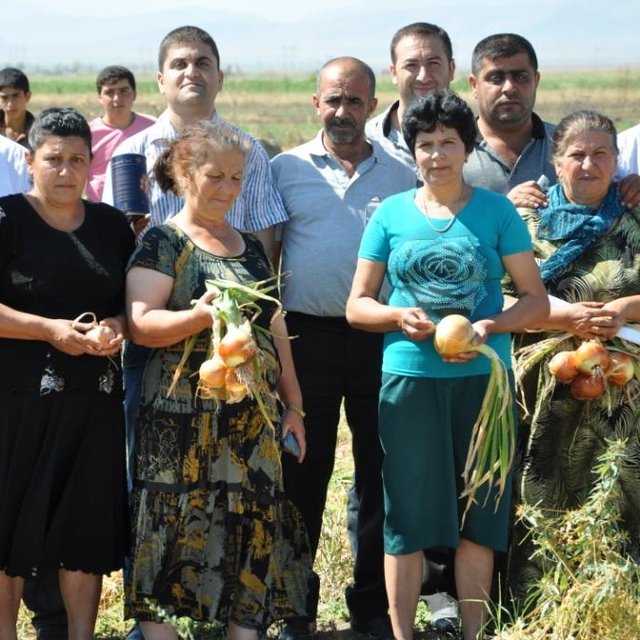
Open Field day where local farmers come and inspect the demonstration plot and talk to the farmer and the seed dealer. (S. Stevenson (Oxfam, Azerbaijan))
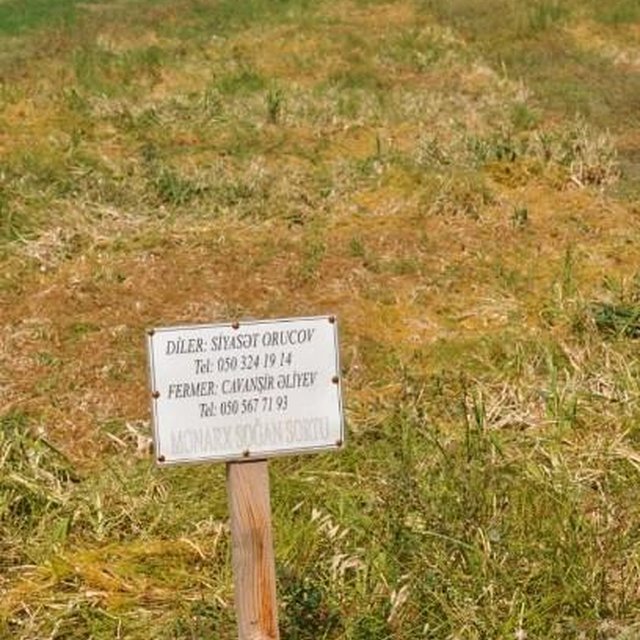
0.1ha Onion demonstration plot with a sign giving the details of the variety, seed dealer, and farmer. (S. Stevenson (Oxfam Azerbaijan))
Approach aims and enabling environment
Main aims / objectives of the approach
The Approach focused mainly on other activities than SLM (Intensification and improved yields)
The main aim was to introduce more effective and high yielding varieties of traditional crops to the small rural farmers of central Azerbaijan, and consequently improve their livelihood status.
The SLM Approach addressed the following problems: There are several key problems, including low productivity, lack of agricultural knowledge, funds for investment, large rural poverty and lack of stimulus in the agricultural sector.
Conditions enabling the implementation of the Technology/ ies applied under the Approach
-
Legal framework (land tenure, land and water use rights): Internally Displaced People (IDPs) in Azerbaijan have very limited access to land. Many of the them live in the region of implementation of the approach. It remains to be seen if the choice of variety will help these people improve their agricultural output.
Conditions hindering the implementation of the Technology/ ies applied under the Approach
-
Social/ cultural/ religious norms and values: There is an over dependence on traditional varieties of vegetable seeds and a lack of trust in the vegetable seed value chain.
Treatment through the SLM Approach: To build the trust between the seed dealer and the farmers through an evidence based process and consequently introduce better suited and higher yielding varieties.
-
Availability/ access to financial resources and services: Traditional varieties tend to be the cheapest on the market due to the volume. Seed dealers provide rural farmers with credit until harvest time but often fail to recouperate the loans due to poor yields.
Treatment through the SLM Approach: Seed dealers have increased confidence in the profit potential of new brands due to higher yields and are more likely to provide credit to farmers until harvest time.
-
Institutional setting: The seed authority has a legal responsibility to inspect and certify seeds. At best this is a limited practice and does nothing to prevent the import of adulterated seed into the country.
Treatment through the SLM Approach:
-
Workload, availability of manpower: Many of the traditional varieties require high levels of input for cultivation to maintain yields, albeit low, and prevent disease.
Treatment through the SLM Approach: New varieties have a higher degree of disease resistance and require less agricultural inputs.
Participation and roles of stakeholders involved
Stakeholders involved in the Approach and their roles
| What stakeholders / implementing bodies were involved in the Approach? |
Specify stakeholders |
Describe roles of stakeholders |
| local land users/ local communities |
The land users were predominantly men i.e. 15 /18, however, there was reasonable representation by women at the field days. (The three demonstration plots tended by women land users were not as successful due to their limited technical capacity)
Also disadvantaged groups are involved. (It improved the profit margins of rural land users by increasing yield, quality and storage capacity of crops. In some cases there was a 50% increase in profits in tomato, onion, aubergine and sweet pepper). |
Land user provides land and labour resources for cultivation. |
| community-based organizations |
|
Community land users attended open days to gain information. |
| SLM specialists/ agricultural advisers |
Seed dealers in this context |
Provide agricultural extension services |
| NGO |
|
Facilitate the approach |
| private sector |
Seed dealers |
Provide inputs and advice free of charge |
Involvement of local land users/ local communities in the different phases of the Approach
none
passive
external support
interactive
self-mobilization
planning
the land users decide with the seed dealers on the crop to be planted
implementation
The land user is entirley responsible for the cultivation and harvest activities.
monitoring/ evaluation
The land user is responsible to report back the success of the project to the seed dealer and the local community.
Flow chart
The programme's role (i.e. Oxfam's) was to act as a facilitator in the process and not to provide tangible assets for the seed dealer or the farmers. It is beased up the Market for the Poor approach developed by Springfield Consultancy, UK.
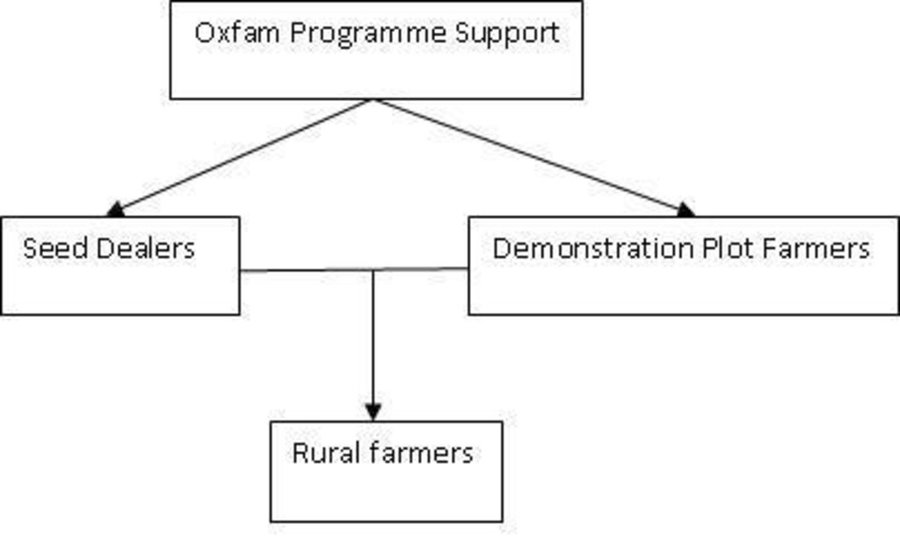
Author: S. Stevenson (Oxfam Azerbaijan)
Decision-making on the selection of SLM Technology
Decisions were taken by
-
land users alone (self-initiative)
-
mainly land users, supported by SLM specialists
-
all relevant actors, as part of a participatory approach
-
mainly SLM specialists, following consultation with land users
-
SLM specialists alone
-
politicians/ leaders
Decisions were made based on
-
evaluation of well-documented SLM knowledge (evidence-based decision-making)
-
research findings
-
personal experience and opinions (undocumented)
Technical support, capacity building, and knowledge management
The following activities or services have been part of the approach
-
Capacity building/ training
-
Advisory service
-
Institution strengthening (organizational development)
-
Monitoring and evaluation
-
Research
Capacity building/ training
Training was provided to the following stakeholders
-
land users
-
field staff/ advisers
-
community famers gain some information on the open field days.
Form of training
-
on-the-job
-
farmer-to-farmer
-
demonstration areas
-
public meetings
-
courses
Subjects covered
Specifically on cultivation techniques, inputs and irrigation.
Advisory service
Advisory service was provided
-
on land users' fields
-
at permanent centres
Name of method used for advisory service: Seed Dealers; Key elements: Seed variety, Cultivation, Agricultural Inputs; This is cursory support.
Advisory service is inadequate to ensure the continuation of land conservation activities; This is an informal arrangement whereby the seed dealers act as agricultural extension services, this is not their primary purpose and will only continue to do it as part of a customer service remit.
Monitoring and evaluation
Bio-physical aspects were regular monitored by project staff through observations; indicators: Output from demo plots was calculated
Bio-physical aspects were regular monitored by project staff through measurements; indicators: Quality of the cultivation was observed by project staff.
Technical aspects were regular monitored by project staff through observations; indicators: Number of land users attending demonstration days was recorded
Technical aspects were None monitored by project staff through measurements
There were no changes in the Approach as a result of monitoring and evaluation
There were no changes in the Technology as a result of monitoring and evaluation
Research
Research treated the following topics
-
sociology
-
economics / marketing
-
ecology
-
technology
Comparitive cost benefit analysis was undertaken between the demonstration plots and traditional varieties.
Research was carried out on-farm
Financing and external material support
Annual budget in USD for the SLM component
-
< 2,000
-
2,000-10,000
-
10,000-100,000
-
100,000-1,000,000
-
> 1,000,000
Precise annual budget: n.a.
Approach costs were met by the following donors: international non-government (facilitation, including the arrangement of the open field days): 65.0%; private sector (seeds and input materials): 5.0%; local community / land user(s) (labour and agricultural machinery): 30.0%
The following services or incentives have been provided to land users
-
Financial/ material support provided to land users
-
Subsidies for specific inputs
-
Credit
-
Other incentives or instruments
Financial/ material support provided to land users
30% of the approach was paid by the private sector (i.e. seed dealers and farmers)
partly financed
fully financed
agricultural: seeds
new seeds
Open field day
Training room and lunch
Labour by land users was
-
voluntary
-
food-for-work
-
paid in cash
-
rewarded with other material support
Impact analysis and concluding statements
Impacts of the Approach
No
Yes, little
Yes, moderately
Yes, greatly
Did the Approach help land users to implement and maintain SLM Technologies?
It improved their crop selection and had a slight impact on their technical capacity.
Did the Approach empower socially and economically disadvantaged groups?
For 15 rural farmers that have cultivated demo plots.
Did other land users / projects adopt the Approach?
It is too early to say, however this was a primary goal of the project.
Main motivation of land users to implement SLM
-
increased production
-
increased profit(ability), improved cost-benefit-ratio
-
reduced land degradation
-
reduced risk of disasters
-
reduced workload
-
payments/ subsidies
-
rules and regulations (fines)/ enforcement
-
prestige, social pressure/ social cohesion
-
affiliation to movement/ project/ group/ networks
-
environmental consciousness
-
customs and beliefs, morals
-
enhanced SLM knowledge and skills
-
aesthetic improvement
-
conflict mitigation
Sustainability of Approach activities
Can the land users sustain what hat been implemented through the Approach (without external support)?
Oxfam will continue to facilitate the demonstration plots for another season, and whereby this arrangement will then have to be self sustained. The issue is whether the seed dealer will continue with the open fields days or rely on the famer to spread the information with regards to the crop.
Conclusions and lessons learnt
Strengths: land user's view
-
It was successful as profit from the land has been improved, and new varieties have been introduced. (How to sustain/ enhance this strength: Try more varieties to see how they grow.)
Strengths: compiler’s or other key resource person’s view
-
The approach was easy to implement once the stakeholders understood the idea behind it. (How to sustain/ enhance this strength: The famers could develop into sub dealers for the farmers.)
Weaknesses/ disadvantages/ risks: land user's viewhow to overcome
-
Availability of the seed variety in the next season is not sure.
Provide positive feedback to the seed dealers that there is a demand for their product.
Weaknesses/ disadvantages/ risks: compiler’s or other key resource person’s viewhow to overcome
-
It is fully dependent upon the seed dealer participating.There are also issues to ensure that the new seed variety will continue to be imported into the country and that it remains financially competitive.
An advocacy event is planned to encourage importers to further develop links with the importers. Seed dealers were invited to a coordination meeting to discuss their experiences and share success stories.
References
Date of documentation: Sept. 6, 2013
Last update: Aug. 2, 2017
Resource persons
-
shane stevenson (stevenson.shane.p@gmail.com) - SLM specialist
Full description in the WOCAT database
Documentation was faciliated by
Institution
- Oxfam GB (Oxfam GB) - Tajikistan
Project
